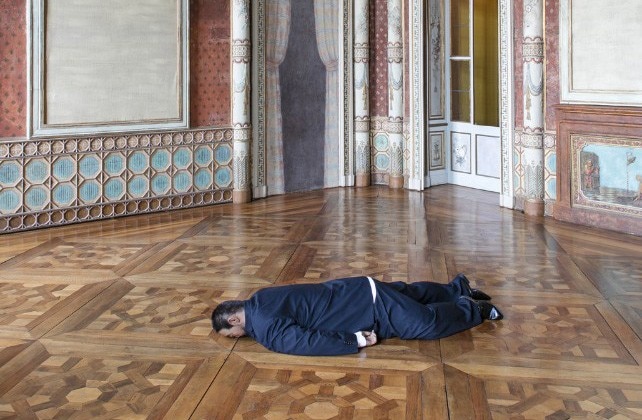A close relationship has always existed between public and private in art and nearly all museum collections stem from private collections. Donations remain one of the principal sources of enrichment of museum collections and the significant role played by collectors in the complex art world is not only, or not always, a financial one. Tis is how the leading collector of contemporary Chinese art, Switzerland’s Uli Sigg, and a major collector of European art, Turin’s Francesco Federico Cerruti, find themselves side by side in the Castello di Rivoli.
That collectors are not driven by money alone is demonstrated by the role played by Uli Sigg (Lucerne, 1946), of whose contemporary Chinese and Oriental art collection the Castello di Rivoli is exhibiting a mere, almost miniscule, fraction – 40 works by 25 artists out of approximately 2500. The many portraits of the collector constitute a striking presence in the exhibition although, in his defence, he does say that he did not request them, rather the artists spontaneously painted him and gifted him the portraits. Yet this already says something about the relationship between Sigg and the hundreds of contemporary artists – 500 – whose pictures he has purchased, thereby sustaining their work and sometimes even financing the production in advance, as in the case of Xe Xiangyu’s Coca-Cola Project. So we have to ask why a contemporary artist paints a collector? To convey their close relationship? In a homage to their vanity? What does it mean when these portraits, seven in all, are included in an exhibition of 40 works? This is perhaps where we should look in order to understand the curatorial choice adopted by the Rivoli museum to which Sigg gifted two works by Miao Ying and He Xiangyu commissioned for the museum, one of which showing Ai Weiwei lying face down on the floor.
That this collector, who prefers to call himself a researcher, has played an extraordinary role is without question. The first manager to enter China in 1979 when it was opened up to Western capital by Mao’s successor Deng Xiaoping and then Swiss ambassador to China, North Korea and Mongolia from 1995 to 1998, he now holds a number of other positions in both the business and cultural spheres. Lastly, in 2012 he transferred a substantial part of his collection to the M+ museum in Hong Kong, designed by Herzog & De Meuron and scheduled to open in late 2020. His collection will form the museum’s core nucleus. Indeed, Hong Kong has already been returned to China and, although very different from it politically, legislatively, economically and socially, it is a door ajar on the rest of that immense country.
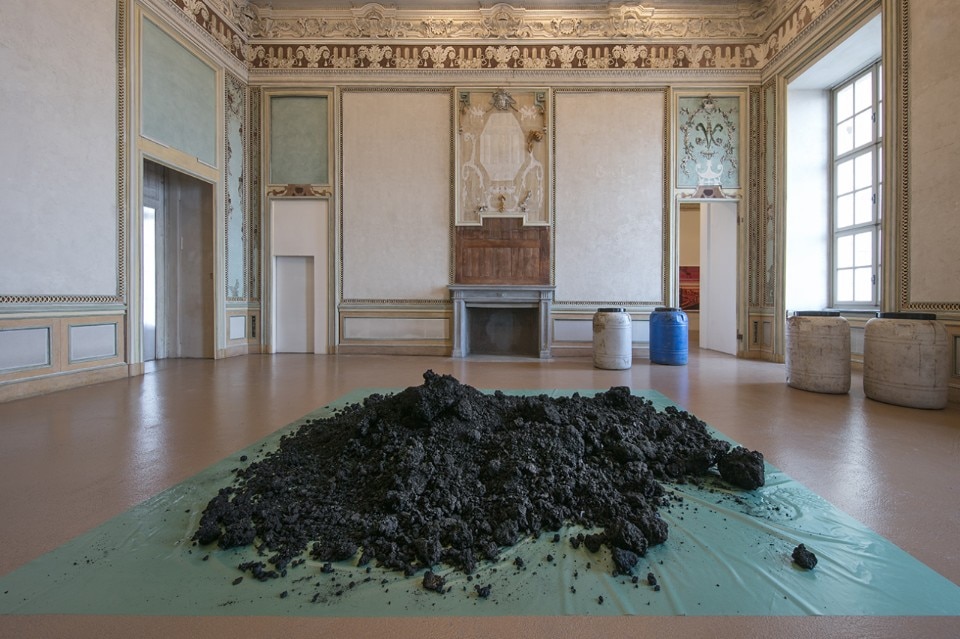
When asked why Hong Kong and not Beijing, Shanghai or another Chinese city, he replies that it is because he has not received guarantees that there would be no censorship. Certainly, the support he has given Chinese artists over the last 40 years has not shunned works of social and political criticism and Ai Weiwei features among these. Actually, Sigg says it is thanks to his encounters with Weiwei that he decided to become an artist. The latter’s training, when he studied and lived in the West, probably explains the relationship between the two. Ai Weiwei constitutes a bridge between the two cultures and political systems as he can speak to both. His family suffered during the Cultural Revolution but he knows how to talk to power and believes he can criticise it, something he paid for by spending 81 days in prison in 2011. However, being so well known and protected, he was released.
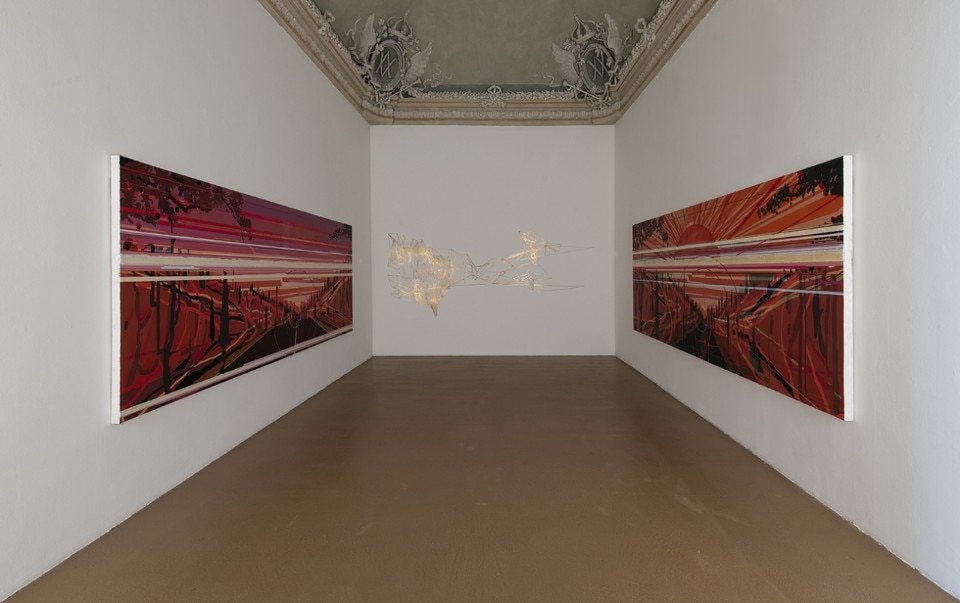
Uli Sigg has often said he has always seen his collection as something he would return to the Chinese in an act of generosity towards those who for political but also cultural reasons were not ready to understand a part of their own history. This is certainly true but, equally, it is the story of his judgement that narrates the collection and he is a man very familiar with a Chinese contemporary art market that he helped to build and steer. The collection has been constructed with an encyclopaedic spirit. It was not built “according to my own personal taste” says the collector in front of Sun Yuan & Peng Yu’s One or All (Ash Column), made of compressed human ashes from anonymous corpses, and we have no reason to doubt him. But if his taste did not decide then what are the entries in this encyclopaedia? In the early years, when Sigg was exploring the artists’ studios, the circle of those working outside the box, the regime and their own culture was certainly small. Probably something like early 20th-century Paris, but when the artists started exhibiting in major international exhibitions and galleries opened in China, did other collectors, especially Westerners, start buying?
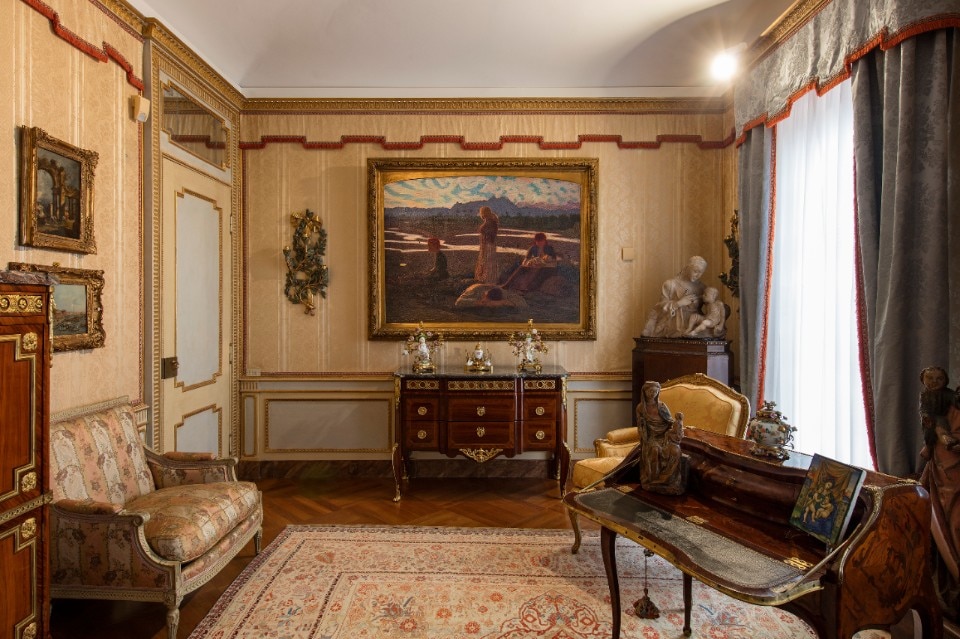
Now to Ragionier Cerruti, another unusual collector but then what collector is not? Obsessive, rich, refined, special and maverick despite any generosity, because they want to leave a trace of their very own vision of the (art) world.
A stone’s throw from the Castello di Rivoli, the town of the same name is home to a number of villas large and small, much like many others scattered throughout every region of Italy. They are mostly anonymous when not expressly featuring the uninspired architecture complete with clients’ follies that has characterised Italy since the economic boom. One of these belonged to Francesco Federico Cerruti, a capable and innovative Turin industrialist – born in Genoa in 1922 – who started collecting art methodically from an early age. In 1967, he had the villa in question built although he never lived in it, instead spending his entire life in an unassuming apartment close to the family factory that he had expanded after the war, the Legatoria Industriale Torinese, to be clear the one that bound telephone books and could produce up to 200,000 of them a day. Originally in Provencal style and then altered as the collection grew, it retains its original poor taste but has been skilfully returned to the community by the architects Con3studio and Baietto Battiato Bianco who were responsible for its conversion from private villa to public museum space. It is packed with 300+ extraordinary works and furnishings for a total of nearly a thousand objects.
The Ragioniere, as he wished to be called to echo his origins, was a quiet and solitary man but had clear ideas on his personal museum where he cultivated orchids, among other things. He had a knowing gaze on the quality of every single work and object as if in possession of a lens that enabled him to see what mattered in the story of an artist, a historic period or an artefact. A bulimic vision spanning from the 14th to the 20th century, from precious and rare editions of books to baroque furniture, from a dining room with a table commissioned “in period style” and magnificent De Chiricos to the gold backgrounds of a room he had built in the round tower – one of those architectural follies mentioned above – which was apparently a death chamber in which to reflect on the natural and inevitable end of existence.
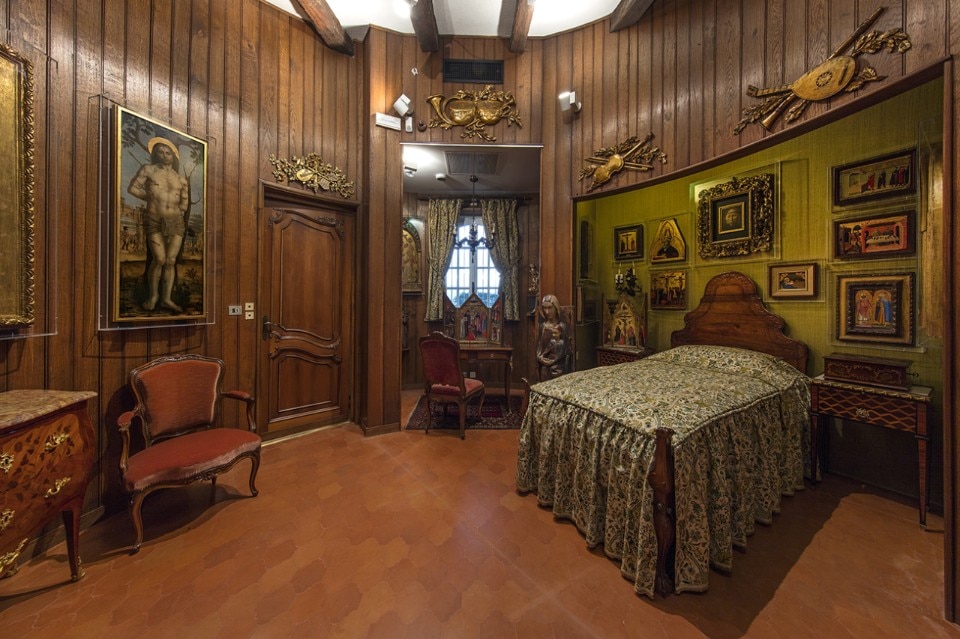
A Foundation was already in place when he died at the age of 93 in 2015 and it entrusted the management of his house-museum to the Rivoli Museum, complete with the necessary funds. It opened to the public after a three-year refurbishment and the Museum has started to bring the two collections together. The five Morandi paintings from the Cerruti collection appear in dialogue with the works of as many contemporary artists. These small-format works look diminutive in the grandiose spaces of the castle and alongside the large works by contemporary artists. The museum’s commendable effort to link the two collections is at odds with the reality of their nature. The Ragioniere made choices for himself and his home, and it shows. But the Museum’s duty to connect past and present is a civil duty it has undertaken and the Cerruti collection provides it with an extraordinary opportunity, especially in times when some slyly pretend that this link to History does not exist.
- Exhibition:
- Di fronte al collezionista. La collezione di Uli Sigg di arte contemporanea cinese
- curated by:
- Marcella Beccaria
- Venue:
- Castello di Rivoli Museo d'arte contemporanea
- until:
- 21-6-2020
- Collezione Cerruti:
- recommend booking on the website of Castello di Rivoli


